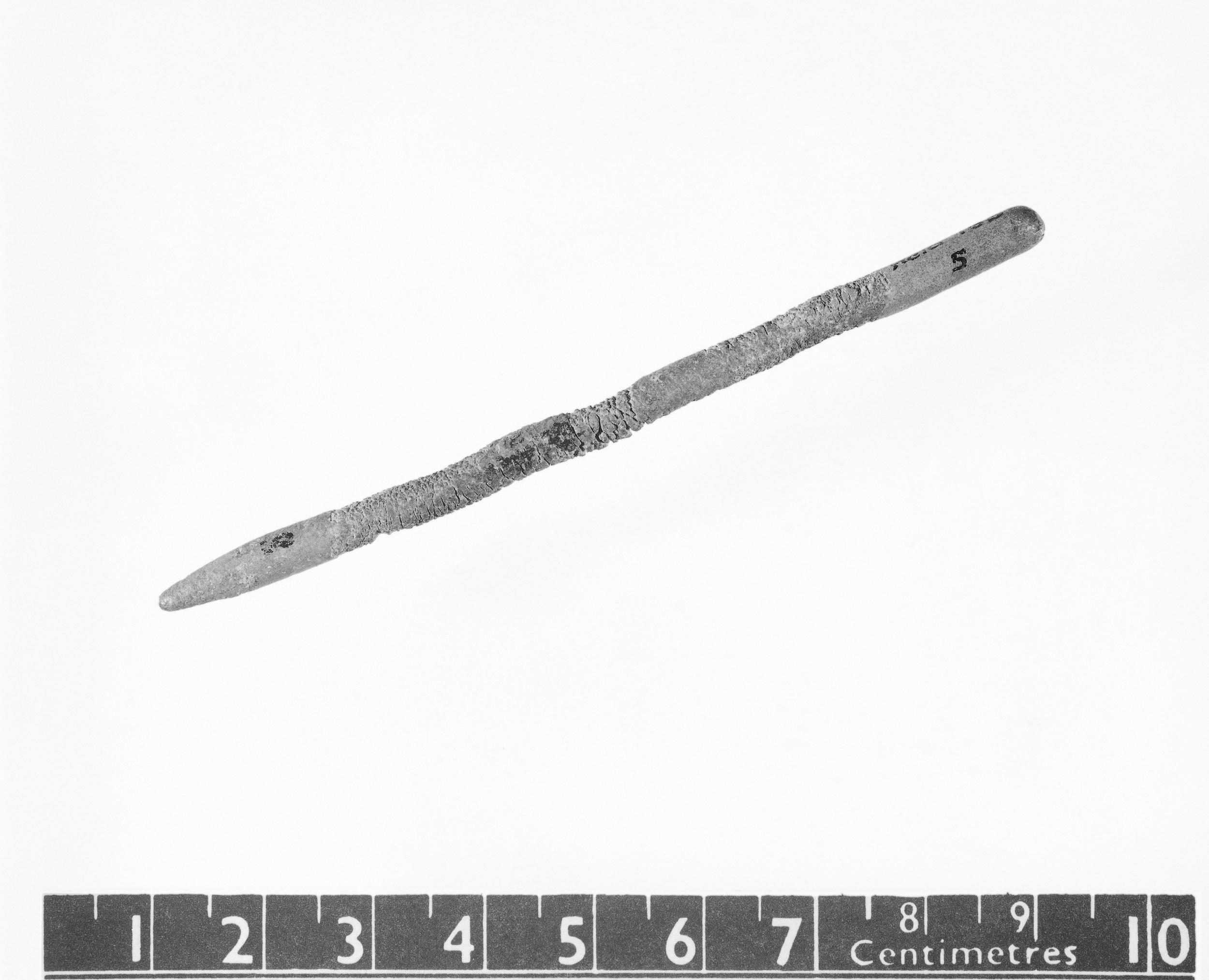 © The Trustees of the British Museum, usage via the Creative Commons Attribution-NonCommercial-ShareAlike 4.0 International (CC BY-NC-SA 4.0) license
© The Trustees of the British Museum, usage via the Creative Commons Attribution-NonCommercial-ShareAlike 4.0 International (CC BY-NC-SA 4.0) license
Did lead (Pb) pencils exist? This notion has been regularly dismissed as a myth.
Two years ago, I saw a display of three lead pencils in a special exhibition at the British Library. They were clearly marked “Lead Pencils” by the curators and dated at approximately the year 1400. No woodcase pencils were displayed.
An important point here is that professional museum curators at a top global institution have deemed these objects (one pictured above) pencils, with no footnotes or asterisks.
The Pencil by Henry Petroski has a chapter, “Before the Pencil”, which details the use of reeds and feathers as early writing and marking tools, as well as the stylus, made of bone, metal, or wood. Some might say these lead pencils are styluses. They no doubt are, but I believe we need to differentiate two categories of stylus.
The first category is a stylus that uses pressure to make a mark: A harder surface makes an impression on a softer surface. So an iron stylus marking a wax tablet would be such an example. (Petroski notes these implements were able to double as weapons, and fulfilled this dual function in Roman times.)
The second type of stylus may have the same appearance, but is functionally different – a stylus of copper, silver, or lead has an intrinsic marking ability, and leaves a mark though the depositing of the element onto paper with contact. This category of writing implement is still made today.
The first type of stylus is definitely not a pencil because it can not leave a dark mark on paper – but how about the second? The photographed lead pencil is in the dimensions of a modern pencil. (Some thin (e.g. 2 or 3 mm diameter) metal silverpoint styluses are not – they are clearly too thin and can not be handheld in the manner of a pencil. They are something other than a pencil.
A very related matter also circles the definition of a pencil – must it be woodcased? Animal skins, string, and paper have been used to wrap graphite cores. A post here on paper wrapped pencils remains very popular, and they are still manufactured. Any many pencil companies make woodless pencils. At this blog, the term “woodcase pencil” has often been used to differentiate from mechanical pencils, but includes more than just the modern glued slat pencil. A working definition of pencils can reasonably include the outliers like extruded pencils, paper wrapper (and recycled paper) pencils, and woodless pencils.
If the definition is focused on a pencil being a handheld round cylinder – then bingo – this is a 620 year old early pencil.
So were there lead pencils? I hope that I’ve supported the notion that the answer isn’t a simple no – it depends on assumptions and definitions. I would love to know if the British Library had any internal discussions about their use of the term.
